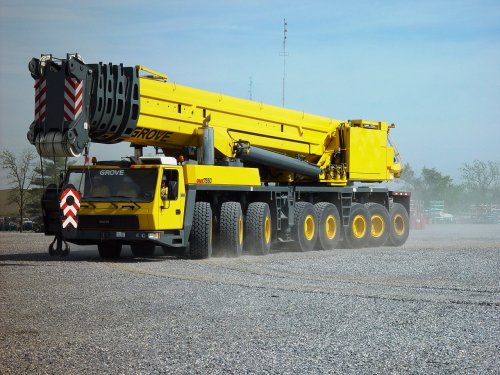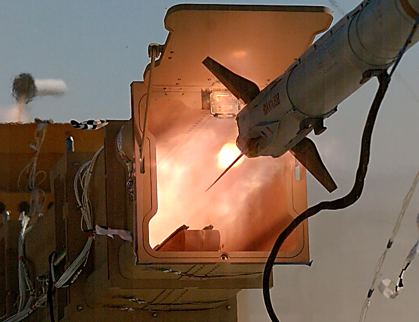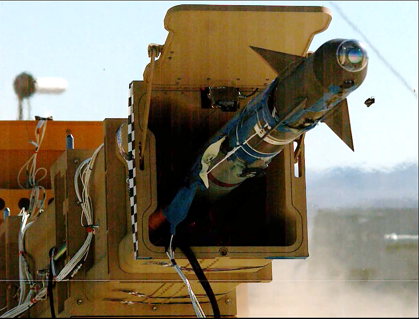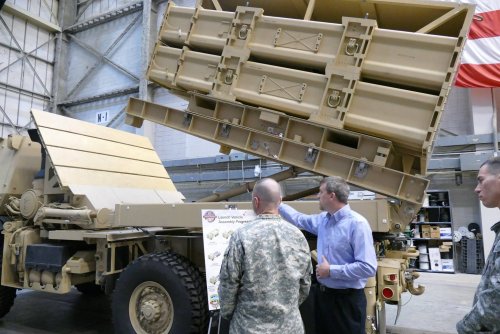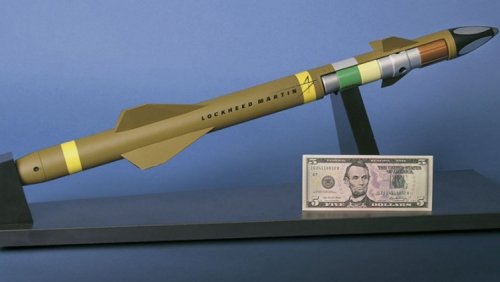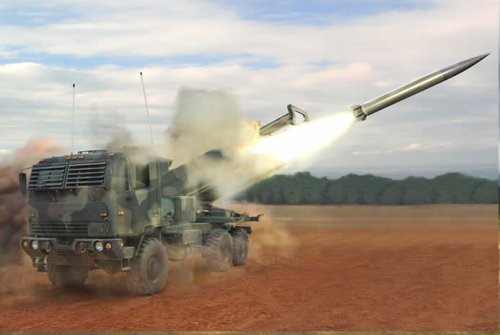- Joined
- 21 April 2009
- Messages
- 13,566
- Reaction score
- 7,193
Army To Develop Multi-Mission Launcher For Indirect Fire Protection
Posted: Mar. 28, 2014
The Pentagon has approved the Army's plan to begin a technology maturation and risk-reduction phase of the Indirect Fire Protection Capability Increment 2 program that will focus on the development of a multi-mission launcher, according to an acquisition decision memorandum. Frank Kendall, the under secretary of defense for acquisition, technology and logistics, signed the ADM last week. It directs the Army to deliver an updated acquisition strategy for the program within 60 days "to reflect the focus of Block I is to develop a multi-mission launcher (MML) and an open architecture that will define an interface that will allow for a variety of missiles to be demonstrated and employed from this MML." The March 24 "for official use only" ADM also directs the Army to conduct an alternate interceptor trade study analysis within 180 days and present the results to him. The IFPC Inc. 2 system is designed to provide 360-degree protection against simultaneous threats from rockets, artillery, mortars and unmanned aircraft systems. IFPC Inc. 2 will integrate with counter-RAM systems and RAM warning systems that support deployed forces and counterinsurgency operations.
The Army began more than a year ago to explore the concept of a multi-mission launcher capable of firing interceptor missiles against a range of threats, but whether it would do so as part of the IFPC program was not certain. The new launcher would include incorporating current Army programs, according to Army spokeswoman Lt. Col. Peggy Kageleiry in November 2012 (ITA, Nov. 5, 2012). Kendall also signed, on the same day as the ADM, a waiver of a competitive prototyping requirement authorizing the Army to develop its own IFPC Inc. 2 Block I prototype. Kendall notes that the primary development component for the IFPC Inc. 2 is the MML. "Within the MML, four items require development: the azimuth drive, the elevation drive, the missile tube, and the missile rack. None of these items represent new technology," the waiver states. "The Army has several missile launchers that hold missile pods and have the ability to elevate and to slew (e.g., High Mobility Artillery Rocket System and Avenger)." The acquisition strategy "leverages mature, fielded components and sub-systems to meet the IFPC Inc. 2-I, Block 1 requirements," it adds. "These components include an existing fire control sensor (Sentinel Radar), existing interceptors, and existing Command and Control system capabilities (Integrated Air and Missile Defense Battle Command System)." The "majority" of the technology risk reduction associated with the effort "has already occurred for these components," the document states. Kendall approved the waiver to allow the Army to develop its own system based on a cost-benefit analysis that concluded "competitive prototyping would not provide additional system maturity or risk reduction to programmatic technical maturation efforts," the document reads.
A competitive prototyping effort would increase costs for the program by approximately $208.5 million and extend the TMRR phase by two years, Kendall wrote. If the Army develops the prototypes, the cost for research, technology, development and evaluation for the MML would amount to $219.6 million. "The costs of producing competitive prototypes would exceed the life-cycle benefits of producing such prototypes by $198.7 million," the waiver states. Kendall notes that the Army's Aviation and Missile Research Development and Engineering Center will develop the MML, producing the design, building prototypes and conducting a formal preliminary design review. "The design will be matured during the development of two prototypes and a Developmental Level Technical Data Package will be created by the AMRDEC," the document adds. As part of the technology maturation effort, the Army must verify the kill chain "end-to-end" resulting in an intercept "verified through telemetry data analysis," the ADM states. The prototypes developed through the program should demonstrate a technology readiness level of 6 within an IAMD system of systems open architecture, the document adds. The MML should also develop an "ability to store multiple interceptors, receive data and launch stored interceptors," the document states. The Army must launch two or more different interceptors from the MML, it adds. The effort should demonstrate "platoon operations using actual hardware and software and hardware emulators," according to the ADM.
An independent cost estimate, attached to the ADM, notes the total technology development phase of the IFPC Inc. 2 effort is expected to cost $429.6 million from fiscal year 2015 through FY-19 and $547.4 million total. The total procurement cost of the system is estimated to be $2.4 billion. The plan, according to the cost estimate, is to purchase 344 launchers and 850 missiles. Kendall estimates the average procurement unit acquisition at $4.4 million for the MML, with an average annual operating and support cost of $625,000 per unit. Initial operational capability is estimated for the fourth quarter of FY-19. -- Jen Judson
Posted: Mar. 28, 2014
The Pentagon has approved the Army's plan to begin a technology maturation and risk-reduction phase of the Indirect Fire Protection Capability Increment 2 program that will focus on the development of a multi-mission launcher, according to an acquisition decision memorandum. Frank Kendall, the under secretary of defense for acquisition, technology and logistics, signed the ADM last week. It directs the Army to deliver an updated acquisition strategy for the program within 60 days "to reflect the focus of Block I is to develop a multi-mission launcher (MML) and an open architecture that will define an interface that will allow for a variety of missiles to be demonstrated and employed from this MML." The March 24 "for official use only" ADM also directs the Army to conduct an alternate interceptor trade study analysis within 180 days and present the results to him. The IFPC Inc. 2 system is designed to provide 360-degree protection against simultaneous threats from rockets, artillery, mortars and unmanned aircraft systems. IFPC Inc. 2 will integrate with counter-RAM systems and RAM warning systems that support deployed forces and counterinsurgency operations.
The Army began more than a year ago to explore the concept of a multi-mission launcher capable of firing interceptor missiles against a range of threats, but whether it would do so as part of the IFPC program was not certain. The new launcher would include incorporating current Army programs, according to Army spokeswoman Lt. Col. Peggy Kageleiry in November 2012 (ITA, Nov. 5, 2012). Kendall also signed, on the same day as the ADM, a waiver of a competitive prototyping requirement authorizing the Army to develop its own IFPC Inc. 2 Block I prototype. Kendall notes that the primary development component for the IFPC Inc. 2 is the MML. "Within the MML, four items require development: the azimuth drive, the elevation drive, the missile tube, and the missile rack. None of these items represent new technology," the waiver states. "The Army has several missile launchers that hold missile pods and have the ability to elevate and to slew (e.g., High Mobility Artillery Rocket System and Avenger)." The acquisition strategy "leverages mature, fielded components and sub-systems to meet the IFPC Inc. 2-I, Block 1 requirements," it adds. "These components include an existing fire control sensor (Sentinel Radar), existing interceptors, and existing Command and Control system capabilities (Integrated Air and Missile Defense Battle Command System)." The "majority" of the technology risk reduction associated with the effort "has already occurred for these components," the document states. Kendall approved the waiver to allow the Army to develop its own system based on a cost-benefit analysis that concluded "competitive prototyping would not provide additional system maturity or risk reduction to programmatic technical maturation efforts," the document reads.
A competitive prototyping effort would increase costs for the program by approximately $208.5 million and extend the TMRR phase by two years, Kendall wrote. If the Army develops the prototypes, the cost for research, technology, development and evaluation for the MML would amount to $219.6 million. "The costs of producing competitive prototypes would exceed the life-cycle benefits of producing such prototypes by $198.7 million," the waiver states. Kendall notes that the Army's Aviation and Missile Research Development and Engineering Center will develop the MML, producing the design, building prototypes and conducting a formal preliminary design review. "The design will be matured during the development of two prototypes and a Developmental Level Technical Data Package will be created by the AMRDEC," the document adds. As part of the technology maturation effort, the Army must verify the kill chain "end-to-end" resulting in an intercept "verified through telemetry data analysis," the ADM states. The prototypes developed through the program should demonstrate a technology readiness level of 6 within an IAMD system of systems open architecture, the document adds. The MML should also develop an "ability to store multiple interceptors, receive data and launch stored interceptors," the document states. The Army must launch two or more different interceptors from the MML, it adds. The effort should demonstrate "platoon operations using actual hardware and software and hardware emulators," according to the ADM.
An independent cost estimate, attached to the ADM, notes the total technology development phase of the IFPC Inc. 2 effort is expected to cost $429.6 million from fiscal year 2015 through FY-19 and $547.4 million total. The total procurement cost of the system is estimated to be $2.4 billion. The plan, according to the cost estimate, is to purchase 344 launchers and 850 missiles. Kendall estimates the average procurement unit acquisition at $4.4 million for the MML, with an average annual operating and support cost of $625,000 per unit. Initial operational capability is estimated for the fourth quarter of FY-19. -- Jen Judson

